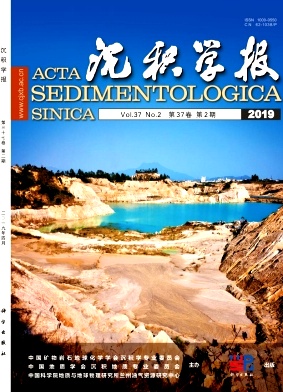Recognition Characteristics and Hydrocarbon Significance of a Falling Stage Systems Tract
doi: 10.14027/j.issn.1000-0550.2018.128
- Received Date: 2018-01-23
- Rev Recd Date: 2018-04-13
- Publish Date: 2019-04-10
-
Key words:
- falling stage systems tract /
- seismic sedimentology /
- sequence stratigraphy /
- northern Baiyun Depression /
- Pearl River Mouth Basin
Abstract: Correlation theory and seismic sedimentology and sequence stratigraphy methods, together with comprehensive utilization of drilling log data, seismic reflection configuration, root mean square amplitude attributes and shoreline migration trajectory recognition characteristics were used to investigate the evolution model and hydrocarbon significance based on a falling stage systems tract (FSST) in the northern Baiyun depression, Pearl River Mouth Basin, at about 21 Ma. It was concluded that the seismic reflection characteristics of the FSST indicates high-angle oblique progradation parallel to the source direction; the front near the basin center tended to develop a basin floor fan with a domed seismic reflection configuration; the shoreline migration trajectory shows a descending trend towards the basin. The result shows that incised U-type valleys are often observed along the vertical source direction, with an internal filling structure parallel to the seismic reflection configuration. The core log curve of the FSST is a combination of funnel-shaped and box-type curves, which indicates multiple parasequence sets controlled by the fourth-order relative eustatic cycle. Each parasequence set shows the characteristics of upward shallowing succession, with its top suddenly changing to a deep water sequence. The FSST in the study area is bounded at the base by prodelta shelf mudstones of the underlying highstand systems tract sequence, and it is overlain by dark mudstones of transgressive and highstand systems tracts. The shelf break has caused strata pinching and a fault system communicates to the oil source, thus forming a favorable source-reservoir-caprock assemblage. Lithological hydrocarbon accumulations usually occur in the area.
| Citation: | YU Ye, ZHANG ChangMin, ZHU Rui, DU JiaYuan, HUANG YanRan, WANG Li. Recognition Characteristics and Hydrocarbon Significance of a Falling Stage Systems Tract[J]. Acta Sedimentologica Sinica, 2019, 37(2): 345-355. doi: 10.14027/j.issn.1000-0550.2018.128 |






 DownLoad:
DownLoad: